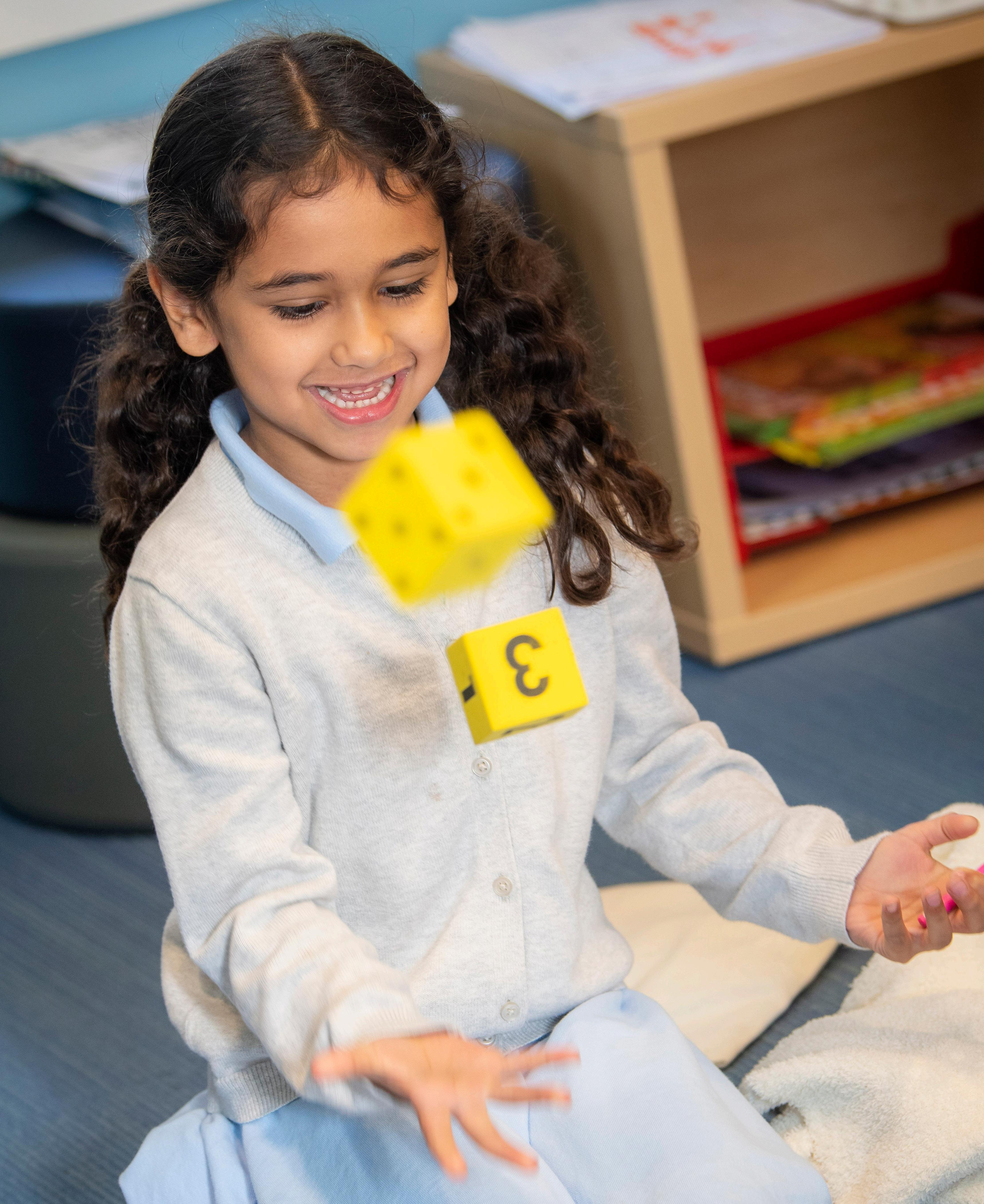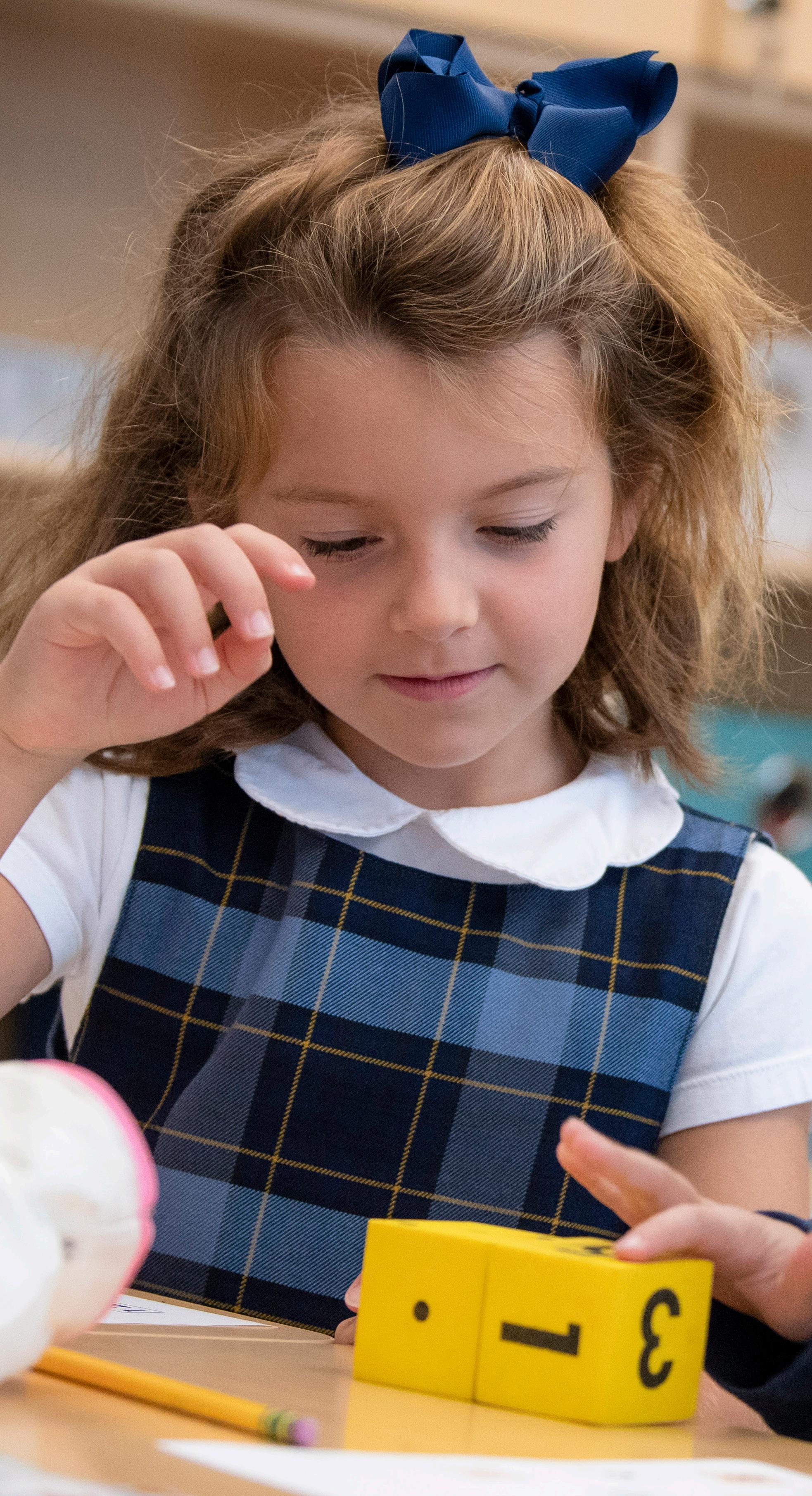
4 minute read
A Parents' Guide to Kindergarten Math
Kindergarten Teacher Kristin Young shares how The Peck School approaches math in "The K."
The kindergarten's essential question is how do we learn —which is the essence of our approach to teaching math. Because we learn through so many different ways, and each student can learn differently, we need to ensure that students can arrive at the same understanding of numbers and math concepts, no matter where they start.
THE FOUNDATION: What is Number Sense?
The first, and most essential concept in kindergarten math is number sense—a person’s ability to understand, relate, and connect numbers.
For example, we know that 2 and 2 is 4, but why is it 4? We can break down number 4 into parts, where we see 2 parts and 2 parts, or 1 part and 3 parts, or 4 parts and 0 parts. Understanding that different combinations of parts can lead to a whole number (or a whole number can be split into different combinations) is the basis for strong number sense, which helps build a foundation for mathematical understanding and allows students to think flexibly and fluently about numbers.
Focusing on number sense at an early age helps build the foundation necessary to compute and solve more complex problems in later grades. Building
a love for math begins with nurturing an understanding of numbers, which is the foundation for higher-level thinking in math.
THE APPROACH: Concrete, Pictorial, Abstract (CPA)
Our learning framework relies on a progression of approaches to build number sense and comprehension: concrete, pictorial, and abstract. Called the CPA Approach, this is a fundamental theory of learning proven to lead to greater mastery of math concepts.
Concrete learning is a hands-on approach that uses tangible items to represent a number being taught. Pictorial learning introduces students to the use of pictures and drawings that represent numbers; a method that helps to clarify reasoning. Lastly, students move into the abstract stage where numerals are put in place (for example, writing out that 3 + 2 = 5).
For all three learning approaches, we use many types of manipulatives to help cultivate a strong command of number sense.

THE TACTICS: What are Manipulatives?
Manipulatives are any various objects or materials that students can touch and move around in order to help them learn mathematical concepts. We use many manipulatives to gain a concrete understanding of numbers.
Manipulatives provide great opportunities for tactile and kinesthetic learning, an ideal method to ensure comprehension for five- and six-year-old learners. .
Two types of manipulatives often used at Peck are ten frames and number bonds, both of which demonstrate combining and breaking down numbers.
TEN FRAMES: We use ten frames to demonstrate the relationship between numbers and quantities. We practice the many different combinations of 10, both forward and backward. (For example, two and eight make ten, but so do eight and two. This is called a ‘turnaround fact.’)
We always start by using a five frame, which is half of a ten frame. In a concrete learning approach, these frames utilize small, colored discs for students to physically place a certain number of yellow discs and a certain number of red discs to create a combination. In a pictorial learning approach, the grid might feature drawings of pumpkins and apples. Here students would circle two different groups to describe the quantities of ten. In an abstract approach, students would write out the numerical equation of what they see on the ten frame.
Using frames allows for more flexible thinking and builds confidence with knowing that there is more than one answer.
NUMBER BONDS: Number bonds are represented as circles connected by lines. The “whole” is written in the first circle, and “parts” in the adjoining circles. This is another visual tool that allows students to see how a number is broken down. Number bonds show how pairs of numbers can be added or subtracted to create a third number. Number bonds can also be used as ten frames, with the CPA approach.
THE OUTCOME: Confidence, Curiosity, and Joy
By engaging students in hands-on learning, visual problem-solving, and foundational math conversations, Peck’s kindergarten math program helps children develop not only number sense but also confidence and curiosity. Our approach ensures that every student feels seen, supported, and successful—no matter how they learn.
With strong foundational skills and a mindset that embraces multiple strategies and perspectives, Peck kindergartners are empowered to see math not just as numbers on a page, but as a dynamic language they can use to explore, question, and make sense of their world.









